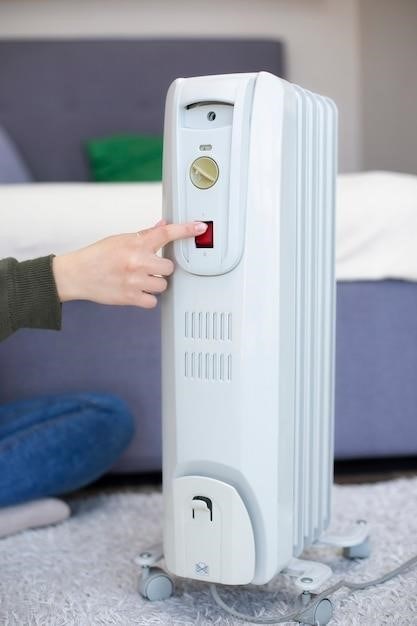The Whirlpool WTW5000DW3 service manual provides essential guidance for maintenance, troubleshooting, and repairs, ensuring optimal performance and longevity of your washing machine. Download the PDF for detailed instructions;
Overview of the Whirlpool WTW5000DW3 Service Manual
The Whirlpool WTW5000DW3 service manual is a comprehensive guide designed to assist users and technicians in maintaining, troubleshooting, and repairing the washing machine. It covers detailed procedures for diagnosing issues, replacing parts, and ensuring optimal performance. The manual includes technical specifications, diagrams, and step-by-step instructions to help users understand and resolve common problems. Additionally, it provides safety precautions and maintenance tips to extend the appliance’s lifespan. Available as a PDF download, this manual is an indispensable resource for anyone seeking to service or repair their Whirlpool WTW5000DW3 washer effectively.
Importance of the Service Manual for Maintenance and Repair
The service manual is crucial for maintaining and repairing the Whirlpool WTW5000DW3 washer. It provides detailed instructions and diagrams to help users diagnose and fix issues, ensuring efficient troubleshooting. The manual also outlines routine maintenance procedures, which are essential for preventing breakdowns and extending the appliance’s lifespan. By following the guidelines, users can perform repairs safely and correctly, avoiding costly damages. Additionally, the manual includes error codes and diagnostic modes, enabling precise identification of problems. Regularly referencing this manual helps users maintain their washer in optimal condition, ensuring reliable performance and longevity. It is a vital tool for both DIY enthusiasts and professional technicians.

Where to Find the Whirlpool WTW5000DW3 Service Manual
The Whirlpool WTW5000DW3 service manual is available on the official Whirlpool website, Sears Parts Direct, and ManualsLib, offering free PDF downloads for easy access.
Official Whirlpool Website and Customer Support
The official Whirlpool website is the most reliable source for the WTW5000DW3 service manual. Users can easily download the PDF version by visiting the Whirlpool Customer Care Center. This platform provides direct access to product manuals, installation guides, and datasheets. Additionally, Whirlpool’s customer support team is available to assist with any inquiries or issues related to the manual. The website also offers a comprehensive search feature, allowing users to quickly locate the specific model they need. By registering your product on the site, you can access exclusive benefits, including service plans and personalized support. This ensures a seamless experience for maintaining and repairing your Whirlpool washing machine.
Third-Party Websites Offering the Manual
Several third-party websites provide access to the Whirlpool WTW5000DW3 service manual, offering convenient downloads for users. Websites like ManualsLib and Sears PartsDirect host a wide range of appliance manuals, including the WTW5000DW3. These platforms often allow free PDF downloads, making it easy to access the manual without visiting the official Whirlpool site. Additionally, some forums and technical support communities share links to the manual, ensuring availability even if the official sources are temporarily inaccessible. However, users should exercise caution when using third-party sites, as they may include ads or require account registration. Always verify the source’s reliability to ensure the manual is genuine and up-to-date. This option is particularly useful for those who prefer alternative download methods.
Direct Download Links and Sources

Understanding the Structure of the Service Manual
The Whirlpool WTW5000DW3 service manual is a comprehensive guide organized into clear sections, including diagrams, technical specifications, and detailed instructions for easy navigation and effective servicing.
Table of Contents and Key Sections
The Whirlpool WTW5000DW3 service manual begins with a detailed table of contents, ensuring easy navigation through its comprehensive sections. Key areas include installation guidelines, routine maintenance procedures, and troubleshooting tips. The manual also covers technical specifications, error codes, and diagnostic modes, providing in-depth information for professionals. Safety precautions and electrical guidelines are emphasized throughout, while diagrams and illustrations enhance understanding of complex repair procedures. Additionally, the manual includes step-by-step instructions for parts replacement and a list of required tools, making it an invaluable resource for both novice and experienced technicians. Each section is designed to address specific needs, ensuring efficient and safe servicing of the appliance.
Diagrams and Illustrations for Better Comprehension
The Whirlpool WTW5000DW3 service manual includes detailed diagrams and illustrations to simplify complex procedures. These visuals provide clear guidance on component locations, wiring connections, and assembly/disassembly steps. High-quality images of internal mechanisms and control panels help technicians identify parts quickly. Illustrations of error codes and diagnostic processes ensure accurate troubleshooting. Step-by-step repair procedures are accompanied by corresponding visuals, reducing confusion and saving time. The manual’s visual aids are particularly useful for DIY enthusiasts and professionals alike, ensuring tasks are performed safely and effectively. By combining textual instructions with visual support, the manual enhances understanding and simplifies the servicing experience for all users.
Technical Specifications and Safety Precautions
The Whirlpool WTW5000DW3 service manual details essential technical specifications, including the washer’s 4.3 cu;ft capacity, 12 wash cycles, and energy-efficient design. It outlines electrical requirements, such as voltage and power consumption, ensuring proper installation and operation. Safety precautions are emphasized, including warnings against improper electrical connections, overloaded circuits, and unbalanced installations. The manual advises users to avoid overloading the washer and to ensure stable placement to prevent accidents. Guidelines for handling cleaning products and emergency procedures, like disconnecting power in case of malfunctions, are also provided. Adhering to these precautions is crucial for safe operation, preventing damage, and ensuring the longevity of the appliance.

Maintenance and Troubleshooting Guide
Regularly clean the filter, check balance, and inspect hoses. Refer to diagnostic modes for error codes and solutions to address common issues promptly and effectively.
Routine Maintenance Procedures
Regular maintenance is crucial for optimal performance and longevity of your Whirlpool WTW5000DW3 washer. Start by cleaning the filter monthly to prevent debris buildup. Check and ensure the machine is properly balanced to avoid vibrations during operation. Inspect hoses for signs of wear or leaks and replace them if necessary. Run a cleaning cycle every 1-2 months to remove detergent residue and odors. Refer to the service manual for specific instructions on these procedures. Additionally, leave the lid open after use to allow internal components to dry, reducing mold and mildew growth. By following these routine steps, you can maintain efficiency, prevent issues, and extend the life of your appliance.
Common Issues and Solutions
Common issues with the Whirlpool WTW5000DW3 washer include error codes, poor drainage, and vibrations. If an error code appears, refer to the manual for specific troubleshooting steps. For drainage problems, check the drain pump filter and ensure it’s clean. Vibrations during operation often result from improper leveling; adjust the machine’s legs to stabilize it. If the washer emits unusual noises, inspect for loose parts or debris. Regularly cleaning the detergent dispenser and gasket can prevent mold and odors. For persistent issues, reset the washer by unplugging it for 30 minutes. Always consult the service manual for detailed solutions and ensure proper maintenance to avoid these problems. Addressing these issues promptly can extend the appliance’s lifespan and ensure efficient performance.
Diagnostic Modes and Error Codes
The Whirlpool WTW5000DW3 service manual details diagnostic modes and error codes to help identify and resolve issues. Enter diagnostic mode by pressing and holding specific buttons, as outlined in the manual. Error codes like “F1” or “F2” indicate specific faults, such as control board malfunctions or sensor issues. The manual provides a list of codes and their meanings, guiding technicians or users to the root cause. By understanding these codes, repairs can be targeted effectively. Regular use of diagnostic modes ensures proactive maintenance, preventing minor issues from escalating. This section is crucial for troubleshooting and ensuring the washer operates efficiently. Always refer to the manual for accurate interpretations and step-by-step solutions. Proper use of diagnostic tools enhances repair accuracy and appliance longevity.

Repair and Replacement Guidelines
The manual provides detailed step-by-step instructions for repairing and replacing parts, ensuring safety and efficiency. Identify faulty components and follow specific procedures for proper installation and testing.
Parts Identification and Replacement
The Whirlpool WTW5000DW3 service manual includes detailed diagrams and descriptions to help identify specific parts that may need replacement. This ensures accurate and efficient repairs. Key components like the drain pump, motor, and tub bearings are highlighted, along with their locations and functions. The manual also provides part numbers, making it easier to order genuine replacements. Clear instructions guide users through the disassembly and reassembly process, emphasizing safety and proper tools. By following the manual’s guidance, technicians and DIYers can replace faulty parts confidently, restoring the washer’s performance and extending its lifespan. Always refer to the manual before starting any replacement to ensure compatibility and adherence to manufacturer recommendations.

Step-by-Step Repair Instructions
The Whirlpool WTW5000DW3 service manual offers detailed, step-by-step repair instructions to address common issues. From diagnosing problems to completing repairs, the manual provides clear, actionable guidance. It includes procedures for replacing faulty components, adjusting settings, and resolving error codes. Each step is accompanied by diagrams and explanations to ensure clarity. The manual emphasizes safety, outlining proper disconnect procedures and tool usage. By following these instructions, technicians and experienced users can perform repairs efficiently. The guide also specifies the use of genuine Whirlpool parts to maintain performance and warranty compliance. Whether it’s a minor adjustment or a major repair, the manual serves as a comprehensive resource for restoring the washer to optimal function. Regular reference to these instructions ensures effective and safe repairs.
Tools and Equipment Required for Repairs
The Whirlpool WTW5000DW3 service manual specifies the essential tools and equipment needed for repairs, ensuring tasks are performed safely and effectively. Common tools include screwdrivers, pliers, and wrenches, while specialized tools like a multimeter may be required for diagnostic procedures. The manual also recommends using Whirlpool-approved test equipment for accurate troubleshooting. Safety gear, such as gloves and safety goggles, is emphasized to protect technicians during repairs. A complete list of required tools is provided in the manual, enabling users to prepare in advance. These specifications ensure repairs are conducted efficiently, minimizing downtime and maintaining the appliance’s performance. Proper tools and equipment are crucial for adhering to safety standards and achieving successful outcomes. Regularly updating your toolkit ensures compatibility with the latest repair procedures. Always refer to the manual for specific recommendations tailored to your washer model. Properly equipped, you can address issues confidently and effectively. By following these guidelines, you ensure repairs are both safe and reliable. The manual’s detailed tool list helps prevent delays and ensures a smooth repair process. This section is designed to empower users with the knowledge needed to handle repairs professionally. Always prioritize using the correct tools to avoid damage and maintain warranty compliance. The Whirlpool WTW5000DW3 service manual is a comprehensive guide for all your repair needs. Tools and equipment are vital for successful repairs, and the manual provides clear instructions to help you get started. With the right tools, you can diagnose and fix issues efficiently, extending the life of your appliance. The manual’s emphasis on proper tool usage underscores its commitment to safety and effectiveness.

Safety Precautions and Warnings
The Whirlpool WTW5000DW3 service manual emphasizes adhering to safety guidelines to prevent accidents. Always disconnect power before repairs, use authorized parts, and follow proper procedures to ensure safety.
- Avoid electrical hazards by unplugging the washer.
- Wear protective gear like gloves and safety goggles.
- Follow all warnings and cautions in the manual.
Electrical Safety Guidelines
When working on your Whirlpool WTW5000DW3 washer, always prioritize electrical safety to avoid hazards. Ensure the machine is unplugged from the power source before starting any repairs. Never attempt to bypass safety features or tamper with electrical components without proper training. Use only authorized replacement parts to maintain safety standards. Keep loose clothing and long hair tied back to prevent entanglement. Avoid working in damp environments, as moisture can increase the risk of electrical shock. Always follow the manual’s instructions for disconnecting and reconnecting electrical connections. If you’re unsure about a procedure, consult a licensed professional to ensure your safety and the appliance’s proper function.
- Disconnect power before servicing.
- Avoid damaged cords or plugs.
- Ensure proper grounding of the appliance.
- Follow all safety warnings in the manual.
Ignoring these guidelines can lead to severe injury or damage. Always refer to the Whirlpool WTW5000DW3 service manual for specific electrical safety recommendations.
Proper Use of Cleaning and Maintenance Products
Using the right cleaning and maintenance products is crucial for keeping your Whirlpool WTW5000DW3 washer in optimal condition. Avoid harsh chemicals or abrasive cleaners, as they can damage the exterior finish or internal components. For routine cleaning, use mild detergents or products specifically designed for appliance care. Regularly clean the gasket and detergent drawer to prevent mold and odors. Always refer to the service manual for recommended cleaning solutions and procedures. Avoid overusing bleach or strong acids, as they can degrade rubber and plastic parts. For tough stains or odors, follow the manual’s guidelines for safe and effective cleaning methods. Proper maintenance ensures longevity and prevents costly repairs. Always check the manual for specific product recommendations tailored to your washer model.
- Use mild detergents for exterior cleaning.
- Avoid harsh chemicals and abrasive cleaners.
- Clean the gasket and detergent drawer regularly.
- Refer to the manual for recommended products.
Following these guidelines helps maintain your washer’s performance and appearance. Regular maintenance ensures a fresh, clean, and efficient washing experience.
Emergency Procedures in Case of Malfunction
In case of a malfunction, prioritize safety and follow the service manual’s emergency procedures. Immediately turn off the power supply to the washer at the circuit breaker or fuse box. Do not attempt to repair the machine yourself unless instructed by the manual. If water is leaking, turn off the water supply valves behind the washer. If the machine is making unusual noises or vibrating excessively, stop the cycle and unplug it. Check for blockages in the drain pump or hoses, but avoid disassembling internal components. Refer to the manual for specific guidance on handling malfunctions safely. Contact Whirlpool customer support or an authorized service technician for professional assistance. Always follow the manual’s instructions to avoid further damage or safety risks.
- Turn off power at the circuit breaker.
- Stop the cycle and unplug the washer.
- Check for blockages in the drain system.
- Contact authorized service professionals.
Never attempt unsafe repairs without proper guidance from the service manual or a certified technician. Your safety and the machine’s integrity depend on following these procedures.

Warranty and Customer Support Information
Whirlpool offers comprehensive warranty coverage and dedicated customer support for the WTW5000DW3. Visit their official website or call 1-800-366-7278 for assistance with repairs, parts, and service plans.
Warranty Coverage and Terms
The Whirlpool WTW5000DW3 is backed by a comprehensive warranty program, ensuring protection for parts and labor under specific conditions. The warranty typically covers defects in materials and workmanship for a defined period, providing peace of mind for users. Detailed terms, including duration and coverage limitations, are outlined in the service manual. Proper registration and adherence to maintenance guidelines are often required to maintain warranty validity. Users are advised to review the manual or contact Whirlpool customer support for precise warranty terms applicable to their model. This ensures clarity on what is covered and any conditions that may void the warranty.
Visit the official Whirlpool website for the latest warranty information and to download the manual for further details.
Contacting Whirlpool Customer Service
For assistance with the Whirlpool WTW5000DW3, customers can reach out to Whirlpool’s dedicated support team. The customer service hotline, 1-800-366-7278, is available Monday through Friday to address inquiries, repair requests, and warranty-related issues. Additionally, users can visit Whirlpool’s official website to access online support resources, including FAQs, troubleshooting guides, and service manuals. Registration of your appliance is recommended to ensure seamless support and warranty validation. For convenience, the service manual can also be downloaded directly from Whirlpool’s website or authorized sources like here. Whirlpool’s customer service team is committed to providing timely and effective solutions to enhance your ownership experience.
Service Centers and Authorized Dealers
For professional assistance, locate Whirlpool-authorized service centers through their official website. These centers provide trusted maintenance and repair services for the WTW5000DW3, ensuring genuine parts and warranty compliance. Dealers are trained to handle complex issues, offering reliable solutions. Visit here for manual downloads, enhancing your service experience with accurate guides and support.

Additional Resources and References
Explore online forums, video tutorials, and FAQs for supplementary guidance on the Whirlpool WTW5000DW3. These resources offer user-generated tips and expert advice for enhanced troubleshooting and maintenance.
Online Forums and Communities
Online forums and communities are invaluable resources for troubleshooting and repair tips related to the Whirlpool WTW5000DW3. Websites like Reddit and specialized appliance repair forums host discussions where users share experiences and solutions. These platforms often include detailed threads on common issues, DIY fixes, and advice from experienced technicians. Additionally, many communities provide access to user-generated repair guides and manuals, which can complement the official service manual. By engaging with these forums, you can gain insights into specific problems, such as error codes or maintenance routines, and learn from others who have faced similar challenges. Active participation in these communities can also help you stay updated on the latest repair techniques and tools, ensuring your washer remains in optimal condition. Always search for specific topics or error codes to find relevant discussions quickly.
Video Tutorials and Repair Guides
Video tutorials and repair guides are excellent supplementary resources for understanding and maintaining the Whirlpool WTW5000DW3 washer. Platforms like YouTube and official Whirlpool channels offer step-by-step visual instructions for common repairs and maintenance tasks. These videos often cover topics such as diagnosing error codes, replacing worn-out parts, and performing routine cleaning. Additionally, some tutorials focus on specific features of the WTW5000DW3, such as the Quick Wash cycle or balancing the washer for optimal performance. Many repair guides are also available as downloadable PDFs, providing detailed diagrams and instructions. By leveraging these resources, users can gain hands-on knowledge and confidence in performing repairs themselves. Always look for tutorials from trusted sources to ensure accuracy and safety.
FAQs and User-Generated Content
FAQs and user-generated content provide valuable insights and solutions for common issues related to the Whirlpool WTW5000DW3 washer. Many users share their experiences and tips on forums and websites, offering practical advice for troubleshooting and maintenance. FAQs often address questions about error codes, noise issues, and optimal usage. Users also discuss their repair experiences, sharing which parts are most likely to need replacement and how to source them. Additionally, some communities create comprehensive guides based on collective knowledge, covering topics like filter cleaning and cycle customization. These resources complement the official service manual, offering real-world perspectives and solutions from fellow users. Engaging with these forums can help users troubleshoot faster and gain confidence in maintaining their appliance effectively.
The Whirlpool WTW5000DW3 service manual is a comprehensive resource for maintaining and repairing your washer. Regularly referring to it ensures optimal performance and extends longevity.
Final Thoughts on Using the Service Manual
The Whirlpool WTW5000DW3 service manual is an invaluable resource for users, providing clear instructions and troubleshooting tips to ensure optimal performance of the washing machine. By following the guidelines outlined in the manual, users can perform routine maintenance, diagnose common issues, and execute repairs effectively. This not only extends the lifespan of the appliance but also enhances its efficiency and reliability. The manual’s detailed diagrams and step-by-step instructions make it accessible to both novice and experienced users. Regular reference to the manual empowers users to take control of their appliance’s care, minimizing the need for professional intervention and reducing maintenance costs over time. It is a comprehensive guide that underscores the importance of proper upkeep for sustained functionality.
Encouragement to Regularly Refer to the Manual
Regularly referring to the Whirlpool WTW5000DW3 service manual is crucial for maintaining the washing machine’s performance and ensuring its longevity. By consulting the manual, users can identify potential issues before they escalate, perform routine maintenance, and optimize the appliance’s functionality. This proactive approach not only prevents costly repairs but also enhances energy efficiency and overall user satisfaction. The manual’s clear instructions and diagrams provide a user-friendly guide, empowering individuals to take charge of their appliance’s care confidently. Consistent reference to the manual fosters a deeper understanding of the machine’s operations, enabling users to address minor problems independently and extend the lifespan of their washer. Regularly reviewing the manual ensures that the appliance continues to deliver reliable service for years to come.
Importance of Proper Maintenance for Longevity

Proper maintenance is vital for extending the lifespan of your Whirlpool WTW5000DW3 washing machine. Regular tasks such as cleaning the filter, checking hoses, and ensuring proper ventilation prevent issues like poor performance and mold buildup. By following the service manual’s guidelines, you can avoid costly repairs and ensure optimal functionality. Maintenance also enhances energy efficiency, reducing utility bills over time. Consistent care helps preserve the machine’s internal components, preventing premature wear and tear. A well-maintained washer delivers consistent results, ensuring cleaner laundry and reliable operation. Investing time in routine upkeep not only safeguards your appliance but also contributes to a safer and more efficient household. Proper maintenance is a cornerstone of extending the longevity and performance of your Whirlpool washer.
























